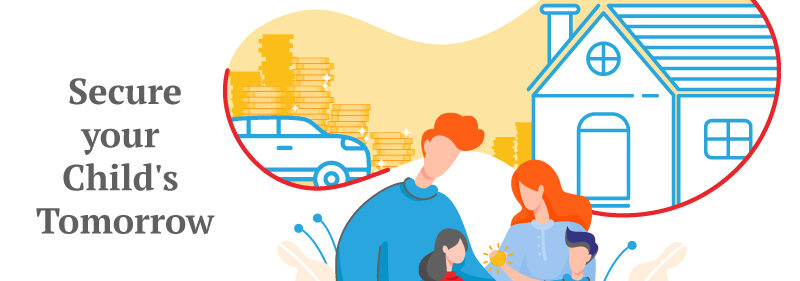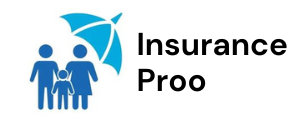Education Insurance

Child education insurance plans are insurance policies that cover your needs for savings and protection in order to safeguard your children’s future. Ensuring your children lead comfortable lives and have a bright future is one of your top priorities as a parent.
A child education plan provides both maturity benefits and full life insurance coverage. Even if you are not present, it can assist you in covering the costs of your child’s future need. Additionally, the plan may be pledged as security for a student loan.
A Child Education Insurance Plan’s Five Features
Child education insurance plans often provide the following features:
One-time payment in full
Certain child insurance policies give your kids a lump sum payout if you pass away during the policy’s duration.
Revocation of premium
The company will take care of premium amounts on your account, so your youngster won’t have to worry about them. Thus, the policy will continue to be in place.
Incomplete withdrawals
Throughout the period, you may receive your money in the form of partial withdrawals, subject to restrictions. This covers all of your child’s academic achievements.
Tax advantages
Under section 80C of the Income Tax Act, the policyholder is entitled to tax gains under such a policy.
Increasing loyalty and boosting wealth
These plans can also include wealth booster and loyalty addition benefits to help you build your money without having to pay more.
Two Kinds of Plans for Child Education Insurance
In India, there are numerous options for child insurance programs. Purchasing the greatest child plan can assist you in reaching the financial goals you have established for your offspring. In order to assist you, the following is a list of the two kinds of kid insurance policies that are offered:
Younger ULIPS
An insurance policy that increases in value as an investment is known as a unit linked life insurance plan, or ULIP. A percentage of your proceeds, much like with a standard child education insurance plan, go toward protecting your child. A combination of debt and equity is used to fund the outstanding amount.
Plans for child savings
The Child Saving Plan gives the policyholder the ability to finance any external market volatility within the plan. This versatile plan combines tax advantages, maturity profits, and life insurance into a single policy.
Child Education Insurance Plans are concerned with your safety and the need for savings to protect your kids’ future. Making sure your kids have a great future and a comfortable life is one of the most important things about being a parent. You can do that by putting money aside for your kids’ college education at a reputable university with the aid of these options.
You pay premiums for a specific term (monthly, half-yearly, yearly, or single pay) when you have a Child Education Insurance Plan. You get a lump sum payment known as the Maturity Benefit when the insurance term ends. The company pays the life cover amount to your nominee in the event that something untoward happens during the policy term.
In essence, a child education insurance plan is a platform for saving money to ensure your child has a secure future, along with the safety of a life insurance policy.
With a lump-sum payoff upon adulthood or in the event of an adverse circumstance, it guarantees your child will pursue the education of their choice.
It acts as a safety net to ensure that, even in your absence, your child’s education is not compromised. Should an adverse circumstance arise, your child will be covered for life.
HERE ARE THE 5 STEPS TO BUILD YOUR CHILD’S HIGHER EDUCATION FUND:
ASSES THE COST OF EDUCATION:
A child education insurance plan is essentially a way to save money and have the security of a life insurance policy for your child’s future.
It ensures your child will pursue the education of their choosing and comes with a lump-sum payout upon maturity or in the event of an unfavorable incident.
It serves as a safety net to guarantee that your child’s education is not jeopardized even when you are not around. In the event that a bad situation occurs, your child will be protected for life.
This technique requires that the costs and benefits be expressed in terms of economics or finances. However, in “cost effectiveness analysis,” the results of exams, scores on cognitive achievement tests, and other metrics can be used to quantify the value of education.
PLAN YOUR INVESTMENT SMARTLY:
In “cost effectiveness analysis,” on the other hand, the worth of education can be measured using exam results, cognitive achievement test scores, and other measures.
Child Education Plans consist of both insurance and investments. These plans give parents the opportunity to invest for their children’s college education while also giving the kids financial security in the event of the parents’ untimely death.
The process of determining your financial objectives and developing a plan to meet them is known as investment planning. The process of investment planning begins with evaluating your financial objectives and creating a list of them. It concludes with investments and ongoing portfolio monitoring.
DECIDE YOUR INVESTMEMT HORIZON:
The term “investment horizon” refers to the amount of time an investor intends to hold onto their stocks before selling them for a profit. A person’s investment horizon is influenced by various things. But often, the investor’s risk tolerance is the main deciding element.
The amount of time one plans to keep onto an investment until they need the money back is known as their investment time horizon, or simply time horizon. The objectives and tactics of investments significantly determine time spans.
CALCULATE THE AMOUNT YOU NEED TO SAVE:
The amount of money an individual or organization must pay for an insurance coverage is known as an insurance premium. Insurance coverage that include life, house, vehicle, and healthcare are paid for with premiums. The insurance firm receives the premium as revenue once it is earned.
Life Insurance Coverage equals X years until retirement minus current yearly wage. For instance, let’s say you are thirty years old, make INR four lakh a year, and plan to retire in thirty years. In this case, INR 12 crores (4,00,000*30) in life insurance is required.
FIND OUT THE CURRENT FINANCIAL CAPIBILITY:
Financial competence is defined as “the ability to manage financial resources effectively, based on knowledge, skills, and access.”
The ability to handle one’s finances in a way that aligns with one’s own interests and ingrained values is referred to as financial capability.
Consumers’ knowledge, attitudes, abilities, and behaviors related to resource management and understanding, choosing, and utilizing financial services that meet their needs are all included in their financial competence.
CONCLUSION:
Child education plans guarantee that your child gets the education they want and provide a lump sum payout upon maturity or in the event of an unfavorable circumstance. It serves as a safeguard to ensure that, in any case, your child’s education is not impacted!
A child education plan provides both maturity benefits and full life insurance coverage. Even if you are not present, it can assist you in covering the costs of your child’s future need. Additionally, the plan may be pledged as security for a student loan.
Plans for child insurance combine investment and insurance goods to guarantee your child’s future financial stability.
